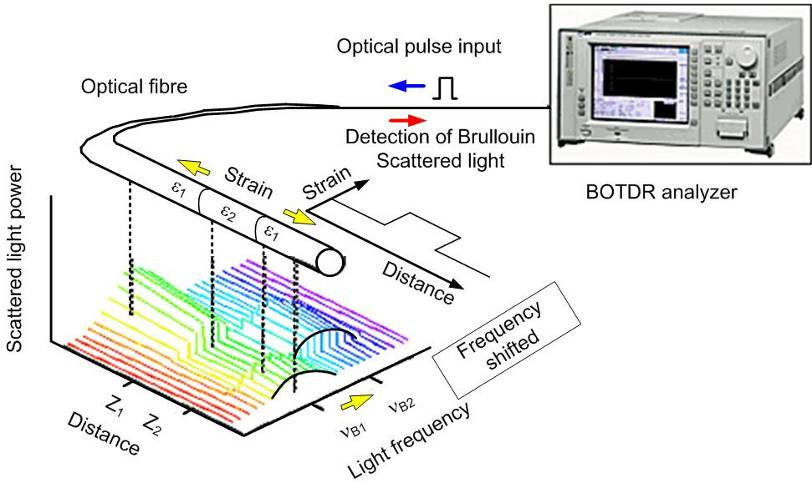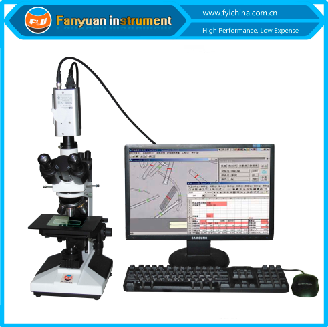Why Optical Fibre Diameter Analyser Systems Are Crucial for Engineers
Why Optical Fibre Diameter Analyser Systems Are Crucial for Engineers
Blog Article
Maximize Your Fiber Optic Performance: Recognizing Optical Fiber Size Analyser Modern Technology
The efficiency of fibre optic systems is critically affected by the accuracy of their size, a factor commonly forgot in the search of optimal signal honesty. Recognizing the modern technology behind optical fiber size analysers exposes the intricate balance between measurement accuracy and manufacturing top quality. These devices not just improve compliance with industry criteria however likewise supply real-time understandings that can preemptively deal with potential concerns. The ramifications of their use prolong beyond plain dimension; they can fundamentally change the landscape of fibre optic efficiency. What aspects should one consider to harness their full possibility?
Value of Optical Fibre Size
The diameter of optical fiber plays an essential duty in establishing the efficiency and effectiveness of interaction systems. It influences several key criteria, including the mode of light propagation, attenuation, and data transfer capability. Larger sizes usually enable numerous light modes, assisting in greater information transmission rates. On the other hand, smaller sized sizes tend to sustain fewer modes, which can improve signal clarity and minimize crosstalk.

Additionally, comprehending the diameter's ramifications can bring about cost savings by decreasing the demand for signal amplification and repeaters in comprehensive networks (optical fibre diameter analyser). In verdict, the importance of optical fibre diameter can not be overstated, as it straight influences the general efficiency and integrity of modern-day interaction systems

Just How Size Affects Signal Quality
Signal quality in optical fibre systems pivots substantially on the size of the fibre. The size affects a number of key specifications, including attenuation, bandwidth, and modal dispersion. A smaller diameter can lead to higher attenuation rates, causing signal loss as light journeys via the fiber. This depletion can compromise the honesty of the transmitted information, leading to a decrease in signal quality, particularly over long distances.
On the other hand, bigger diameters usually allow for boosted light capture and reduced modal dispersion, boosting signal clarity. In multimode fibers, a bigger core diameter can support several light settings, yet it might likewise present intermodal diffusion, which can weaken signal quality. Consequently, selecting the ideal fiber size is vital for accomplishing the preferred efficiency in specific applications.
In addition, the communication between the fiber diameter and the wavelength of the light used plays an important role in identifying the reliable transmission distance and total signal stability. Recognizing exactly how fibre size influences signal quality is necessary for network designers and engineers aiming to enhance optical fiber systems for trusted, high-speed data transmission.
Review of Diameter Analyser Technology
In numerous optical fiber manufacturing processes, accurate measurement of fibre size is crucial for guaranteeing regular efficiency and high quality (optical fibre diameter analyser). Diameter analysers are innovative instruments created to analyze the physical measurements of optical fibres with high precision. They use advanced optical and laser technologies to determine the size, ovality, and concentricity of the fiber, therefore supplying essential data for quality assurance
These analysers can operate in-line during the manufacturing procedure or as component of off-line testing protocols. In-line systems allow real-time surveillance, enabling producers to change parameters right away, consequently preserving optimal manufacturing conditions. Off-line analysers, on the other hand, supply extensive examinations of batches, guaranteeing that any type of variances from defined tolerances are determined and dealt with.
Size analysers considerably add to the decrease of flaws in optical fibers, improving general item integrity. By continually determining vital criteria, these modern technologies help with compliance with market requirements and specs. As the need for high-performance optical fibres remains to climb, the function of diameter analysers becomes significantly important in attaining the preferred high quality and efficiency standards in fiber optic systems.
Key Functions of Fiber Diameter Analysers
Although various models of fibre diameter analysers exist, they typically share numerous crucial features that boost their functionality and reliability. Among the most considerable functions is high-resolution dimension capabilities, which make sure specific size readings, critical for keeping quality assurance in fiber production. Additionally, several analysers integrate advanced optical sensors created to find minute variations in fibre diameter, hence providing indispensable information for process optimization.
One more essential feature is real-time surveillance, allowing drivers to receive instant responses on fibre size throughout the manufacturing process (optical fibre diameter analyser). This capacity helps with fast modifications and reduces the probability of problems. Lots of analysers also come geared up with user-friendly More hints interfaces, making it possible for operators to easily navigate with information and setups outputs
Furthermore, robust information storage and evaluation functionalities are essential for tracking historical performance patterns and ensuring compliance with market criteria. Some versions even provide connectivity alternatives for assimilation into existing manufacturing control systems, improving total functional Visit This Link efficiency. Mobile and small layouts permit for flexible deployment within production settings, ensuring that top quality guarantee procedures are smooth and efficient. These functions collectively contribute to the efficacy of fibre diameter analysers in maximizing fiber optic efficiency.
Ideal Practices for Fibre Optimization

First, regular calibration of optical fiber size analysers is important. This guarantees precise measurements and reduces possible discrepancies that might affect efficiency. Next off, preserving a clean working environment is essential; dirt and pollutants can result in indicate destruction.
Additionally, it is very important to select fibers that fulfill certain application demands. This involves assessing aspects such as attenuation, bandwidth, and environmental conditions. Proper setup methods should additionally be followed, consisting of avoiding sharp bends and excessive tension, which can endanger fiber honesty.
Furthermore, employing innovative tracking systems can assist in real-time efficiency assessments, making it possible for prompt identification of issues. Regular screening and upkeep need to be performed to ensure that fibers continue to be within optimum functional parameters.
Last but not least, training workers on the most up to date fibre optimization technologies and methodologies will certainly boost their ability to apply effective techniques. By complying with these ideal methods, companies can substantially boost the performance and life expectancy of their optical fibre systems, making sure reliable interaction and information transfer.
Verdict
To conclude, the integration of optical fiber diameter analyser technology is critical for optimizing fiber optic performance. By guaranteeing exact measurements of fibre dimensions, these analysers significantly enhance signal top quality and reduce losses during data transmission. Regular calibration and maintenance of the analysers are imperative to copyright ideal performance and compliance with market standards. Ultimately, the application of this modern technology promotes enhanced data transmission rates and strengthens signal integrity, adding to the total efficiency of fibre optic systems.
Signal high quality in optical fiber systems hinges substantially on the diameter of the fiber.In several optical fibre production processes, exact dimension of fibre diameter is essential for making sure regular efficiency and high quality. As the need for high-performance optical fibres continues to rise, the role of size analysers becomes increasingly essential in achieving the preferred quality and efficiency requirements in fibre optic systems.
These features jointly contribute to the efficiency of fiber size analysers in optimizing discover this fiber optic efficiency.
In conclusion, the integration of optical fiber diameter analyser technology is critical for making best use of fibre optic performance.
Report this page